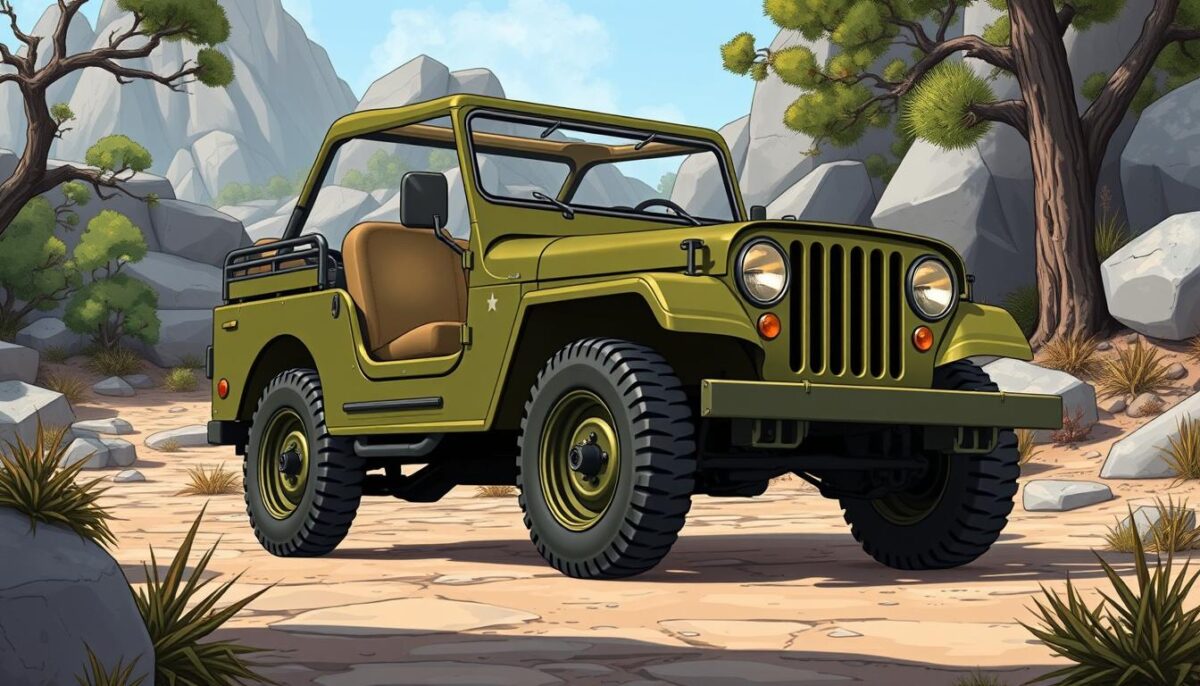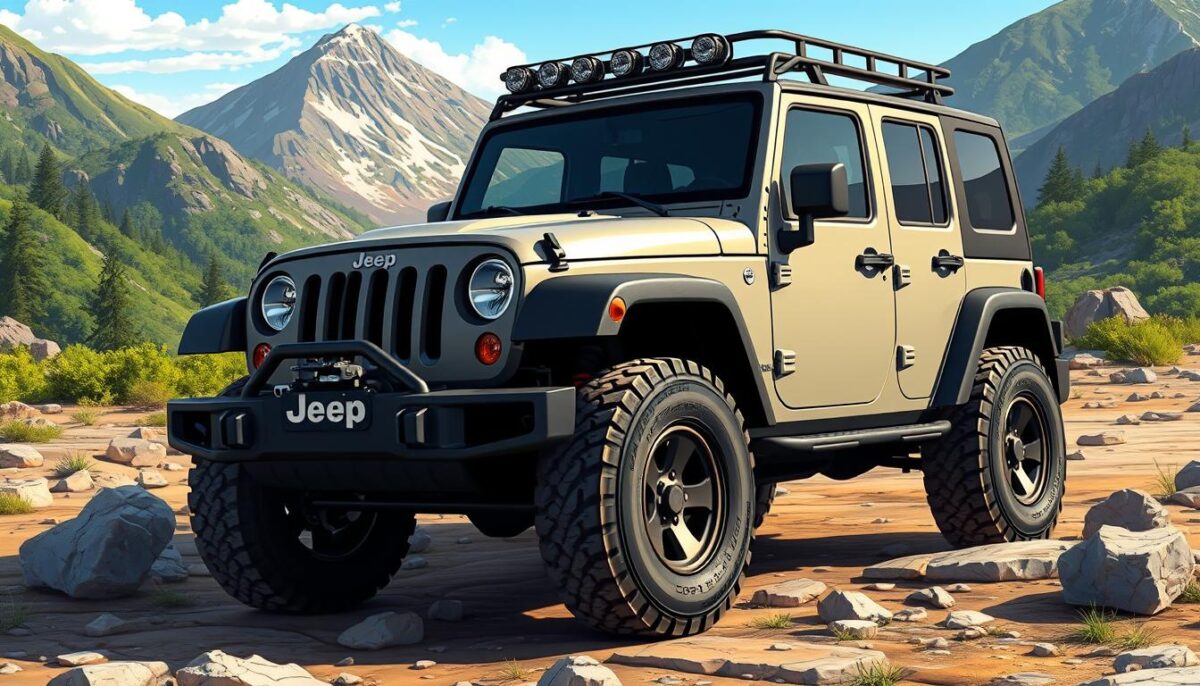Jeep’s design history is rich, shaped over many years. Each curve and line mirrors the brand’s strong heritage. Born during World War II, Jeep blended functionality and style perfectly. The military’s impact made Jeep’s design unique, known for reliability and a distinct look. Now, we explore the historic inspirations behind modern Jeep models. These influences still stand out in every Jeep vehicle today.
We’re on a journey through Jeep’s design history. It celebrates the past and opens doors to future innovations. Let’s dive into what makes Jeep’s design so iconic.
The Historical Roots of Jeep’s Iconic Design
Jeep’s design history goes back to World War II. It needed a vehicle that was versatile, tough, and dependable. That’s how the Willys MB, also known as ‘Jeep,’ came to be. This vehicle didn’t just work well – it looked good and its style remains popular today.
The Military Influence on Jeep Design
The original Jeep was made to take on tough landscapes. This was because of the military’s needs. Here are some key features from the WWII Jeep:
- Flat Fenders: Made for easy production and to hold various accessories.
- Round Headlights: A signature look that defines the brand.
- Four-wheel Drive: It could go through the toughest terrains.
These practical choices are why people love Jeep vehicles. They combine good looks with functionality.
Evolution from WWII to Present Models
Over time, Jeep has kept making improvements while staying true to its roots. The changes in Jeep models show how it keeps historical touches but adds new features:
| Model | Year Introduced | Key Features |
|---|---|---|
| Willys MB | 1941 | Essential military gear, minimalist design |
| Jeep CJ-5 | 1954 | Increased comfort, enhanced off-road capability |
| Jeep Wrangler | 1986 | Reinforced classic design elements, modern technology |
Jeep’s evolution reflects a balance between honoring history and modern needs. It keeps its military essence while upgrading for today’s world.

Jeep Design Inspiration: A Blend of Functionality and Style
Jeep’s design philosophy combines functionality with aesthetic appeal in a unique way. Functional features match the Jeep’s rugged nature. Each element is practical and adds to the style that draws enthusiasts.
Functional Features that Define Jeep Aesthetics
Jeep vehicles have functional features that boost usability and style, for example:
- High ground clearance for off-road capability.
- Removable doors and roofs for an open-air experience.
- The iconic seven-slot grille, symbolizing ruggedness.
These features show how Jeep’s functionality influences its attractive design.
The Role of Customer Feedback in Design Evolution
Customer feedback is key in Jeep’s design changes. Jeep owners help refine features and looks. This keeps Jeeps in line with what people want, building loyalty among fans.
Timeless Design Elements Still in Use Today
Jeep’s identity includes some classic features. The stamped metal body and rugged suspension system show durability and performance. These traits fulfill practical needs and boost the Jeep’s look, showing a commitment to quality design that lasts.

Legacy and Cultural Impact of Jeep’s Design
Jeep’s design legacy combines tough functionality with an iconic look. It appeals to those who love the outdoors across the globe. Known as an American icon, Jeep stands for adventure, resilience, and innovation. Its designs highlight off-road capabilities, influencing automotive engineering and lifestyle trends.
The Jeep community is a big part of its cultural impact. Owners meet at events, share their adventure stories, and show off their customized Jeeps. This shows how Jeep has moved beyond just being a way to get around. It has become a lifestyle of freedom and exploration.
Reflecting on Jeep’s lasting legacy shows us its significant role. Jeep is more than a vehicle maker; it symbolizes American creativity. It encourages explorers and off-road fans across generations. Jeep’s design legacy is strong, reminding us of the joy of open-road adventures.
